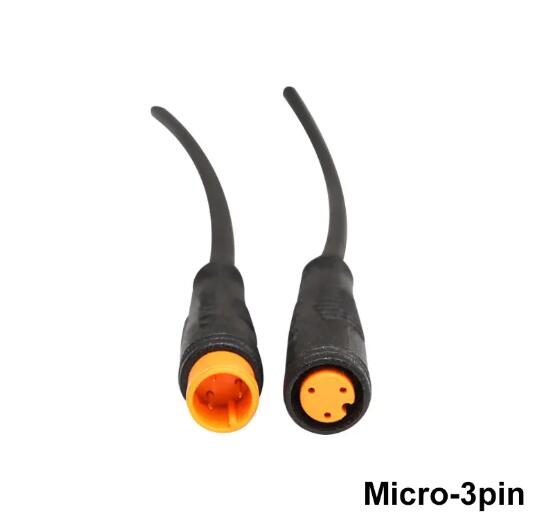Unveiling Connectivity: The Anatomy of a 3Pin Signal Connector
2023-11-21
Introduction:
In the intricate landscape of electronic systems, where seamless communication is paramount, connectors stand as the unsung heroes facilitating the flow of signals and data. Among these connectors, the 3Pin Signal Connector emerges with a compact yet crucial role, offering a gateway for electrical signals between electronic components. In this exploration, we delve into the fundamental design and structure of a typical 3Pin Signal Connector, unraveling the intricacies that make it a linchpin in the realm of electronic connectivity.
The Fundamental Configuration:
1. Number of Pins:
- As the name suggests, a 3Pin Signal Connector is characterized by its three pins. These pins serve as conductive pathways, each with its designated function, contributing to the overall transmission of signals within an electronic system.
2. Pin Layout:
- The pins are arranged in a specific configuration, often following industry standards to ensure compatibility and ease of use. The layout may include a power pin, a ground pin, and a signal pin, with each serving a unique purpose in the connectivity ecosystem.
3. Material Composition:
- The connector is typically constructed from durable and conductive materials such as copper or other alloys. These materials ensure efficient electrical conductivity while providing the connector with the mechanical strength required for durability and longevity.
The Anatomy of a 3Pin Signal Connector:
1. Connector Body:
- The outer shell, known as the connector body or housing, encapsulates the internal components and provides physical protection. It is designed to withstand environmental factors, ensuring the integrity of the connections even in challenging conditions.
2. Pins and Contacts:
- The heart of the 3Pin Signal Connector lies in its pins and contacts. Each pin is a conductive metal rod that serves as a pathway for electrical signals. The contacts, located within the connector body, establish a secure connection with corresponding pins on the mating connector.
3. Insulation Material:
- Insulation material surrounds each pin and contact, preventing unintended electrical contact between neighboring pins. This crucial component ensures that signals are transmitted only where intended, preventing electrical interference or short circuits.
4. Locking Mechanism:
- Many 3Pin Signal Connectors feature a locking mechanism to secure the connection between mating connectors. This ensures a stable and reliable connection, preventing accidental disconnection due to vibrations or movement.
5. Keying and Polarization:
- To prevent misalignment during connection, some 3Pin Signal Connectors incorporate keying or polarization features. These design elements ensure that connectors can only be mated in the correct orientation, avoiding damage and ensuring proper functionality.
6. Termination Style:
- The termination style refers to how the connector is attached to cables or circuit boards. Common termination styles include soldering, crimping, or surface-mount technology (SMT), depending on the specific application and design requirements.
Application-specific Designs:
1. Board-to-Board Connectors:
- In board-to-board applications, the 3Pin Signal Connector is designed to establish connections between different circuit boards within an electronic system. These connectors facilitate communication and collaboration between various components.
2. Cable-to-Device Connections:
- When used in cable-to-device connections, the 3Pin Signal Connector enables the integration of external devices, sensors, or peripherals into electronic systems. This versatility makes it a valuable component in a wide range of applications.
Conclusion:
The 3Pin Signal Connector, though compact in size, plays a pivotal role in the seamless flow of signals within electronic systems. Its basic design and structure, characterized by three pins and a robust connector body, embody the essence of connectivity in the digital age. As electronic devices continue to advance, the 3Pin Signal Connector remains a cornerstone, bridging the gap between components and ensuring the smooth exchange of information in the intricate dance of electrons.



